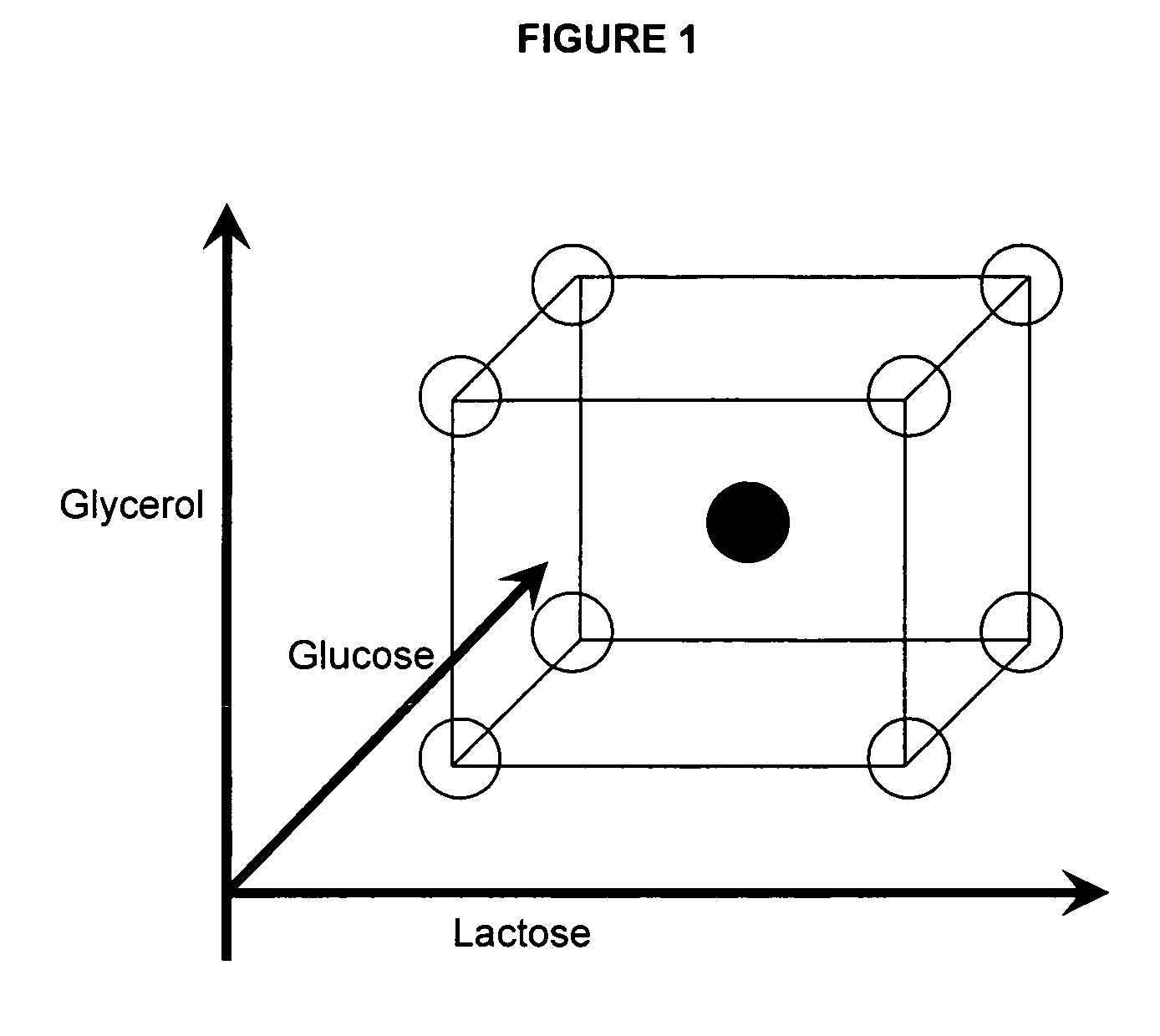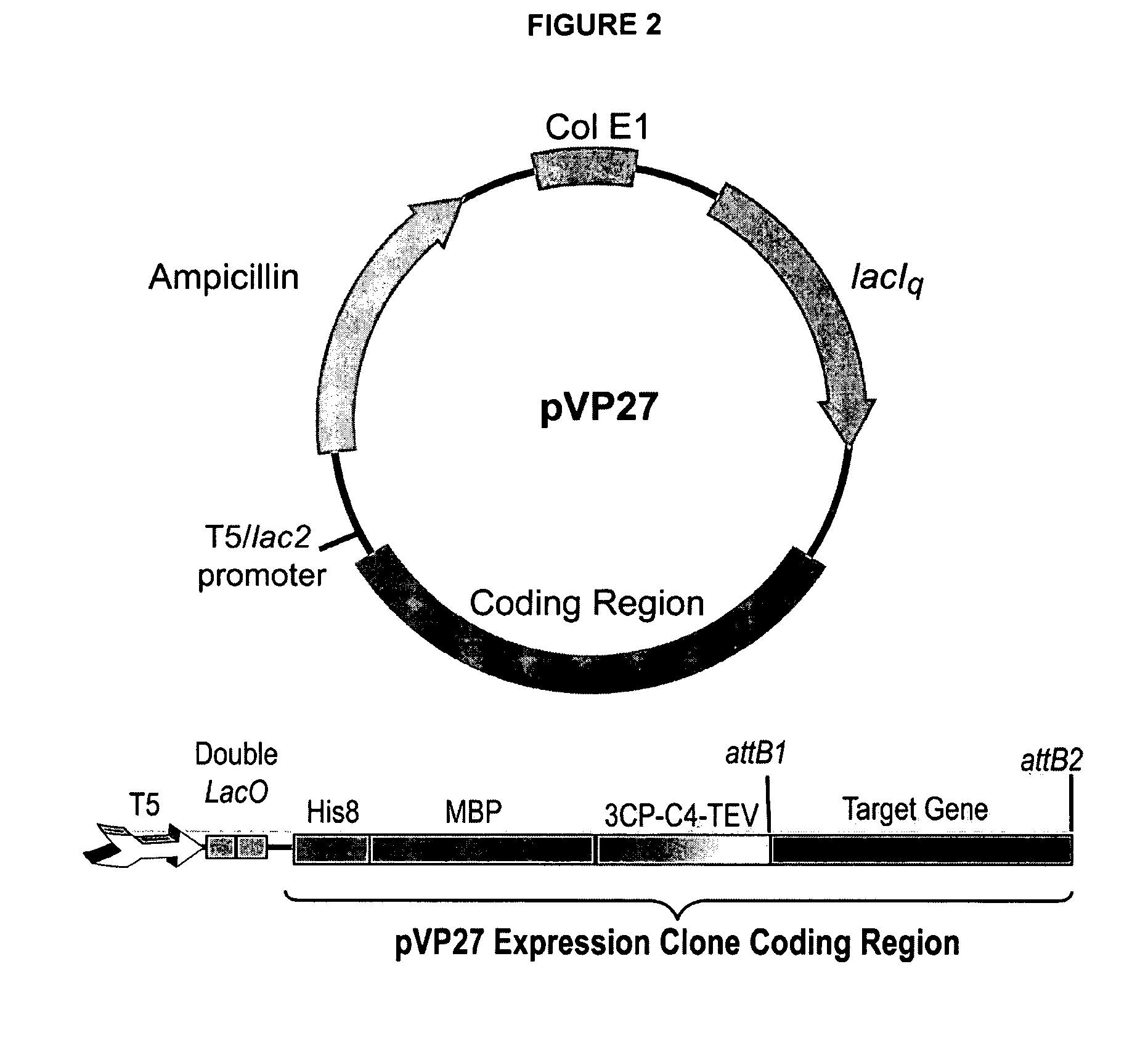Enhanced protein expression using auto-induction media
a technology of enhanced protein and auto-induction, which is applied in the field of cell growth and culture, can solve the problems of complicated circumstances, scaling requirements, and inability to meet the requirements of auto-induction, and achieve the effect of promoting auto-induction of transcription
- Summary
- Abstract
- Description
- Claims
- Application Information
AI Technical Summary
Benefits of technology
Problems solved by technology
Method used
Image
Examples
examples
[0086]It is to be understood that this invention is not limited to the particular methodology, protocols, subjects, or reagents described, and as such may vary. It is also to be understood that the terminology used herein is for the purpose of describing particular embodiments only, and is not intended to limit the scope of the present invention, which is limited only by the claims.
[0087]The following examples are offered to illustrate, but not to limit the claimed invention.
Chemicals
[0088]Unless otherwise stated, bacterial growth reagents, antibiotics, routine laboratory chemicals, and disposable labware were from Sigma-Aldrich (St. Louis, Mo.), Fisher (Pittsburgh Pa.), or other major distributors. L-SeMet was from Acros (Morris Plains, N.J.). Preparations of standard laboratory reagents were as described (Sambrook and Russell, 2001, Molecular Cloning: A Laboratory Manual, Cold Spring Harbor Laboratory Press, Cold Spring Harbor, N.Y., Vol. 3, pp 15.44-15.48). The 2-L polyethylenete...
PUM
| Property | Measurement | Unit |
|---|---|---|
| concentration | aaaaa | aaaaa |
| pH | aaaaa | aaaaa |
| concentrations | aaaaa | aaaaa |
Abstract
Description
Claims
Application Information
 Login to View More
Login to View More - R&D
- Intellectual Property
- Life Sciences
- Materials
- Tech Scout
- Unparalleled Data Quality
- Higher Quality Content
- 60% Fewer Hallucinations
Browse by: Latest US Patents, China's latest patents, Technical Efficacy Thesaurus, Application Domain, Technology Topic, Popular Technical Reports.
© 2025 PatSnap. All rights reserved.Legal|Privacy policy|Modern Slavery Act Transparency Statement|Sitemap|About US| Contact US: help@patsnap.com



